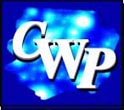|
Measured orbital velocities for hydrogen clouds in over 60 galaxie
and found the velocity does not decrease at large distances from the center
as would be expected if the centripetal acceleration were due to the
gravitational pull of luminous matter in the galaxy. These measurements are
major
support for the widespread belief, now based on other observations as well, that
there may be large amounts of dark matter in the universe
 . .
Some Important
Publications:
This is Vera Rubin's annotated short list of some important
publications.
"Rotation of the Andromeda Nebula from a Spectroscopic Survey
of Emission Regions," Astrophysical Journal 159: 379 (1970), with
W. K. Ford, Jr..
- This was the first of the detailed studies of orbital rotation in galaxies.
"Motion of the Galaxy and the Local Group Determined
from the Velocity Anisotropy of Distant Sc I Galaxies." I. The Data and
II. The Analysis for the Motion, Astrophys.
J. 81: 687 and 719 (1976)
with W. K. Ford, Jr., N. Thonnard, and M.S. Roberts
- I returned to the subject of my Master's thesis, which had been believed by
very few astronomers. But not I obtained my own data to look for large scale
motions in the universe. This paper was also believed by very few, but the
subject became a major branch of extragalactic astronomy a few years later.
"Rotational Properties of 21 Sc Galaxies with a Large Range of Luminosities and
Radii
from NGC 4605 (R=4kpc)
to UGC 2885 (R=122kpc)," Astrophys. J. 238: 471 (1980),
with W. K. Ford, Jr. and N. Thonnard.
- When the subject of large scale motions became too competitive and crowded,
I returned to galaxies rotation properties. Observations of a set of spiral
galaxies gave convincing evidence that orbital velocities of stars in galaxies
were unexpectedly high at large distances from the nucleus. This paper was
enormously influential in convincing astronomers that most of the matter in the
universe is dark, and much of it is clumped about galaxies.
"Rotation Velocities of 16 Sa Galaxies and a Comparison of Sa, Sb, and Sc
Rotation
Properties," Astrophys. J. 289: 81 (1985), with D. Burstein, W. K. Ford,
Jr.,
and N. Thonnard.
- A later paper which brought together data for about 60 galaxies.
"Cospatial Counterrotating Stellar Disks in the Virgo E7/S0 Galaxy NGC 4550,"
Astrophysical Journal (Lett.) 394: L9-L12 (1992), with J. A. Graham and
J. P. D. Kennedy.
- I discovered from observations of NGC 4550 that in the single disk of this
galaxy, half the stars orbit clockwise, and hals the stars orbit
counterclockwise, both systems intermingled. this observation required that
many astronomers modify the manner in shich they measured velocities, for
computer programs were not then equipped to handle such complexity, A nice
discovery to make at age 63!
"A Century of Galaxy Spectroscopy," Astrophy. J, 451: 419 (1995)
-
The Russel Prize Lecture - a chance to survey the history of earlier studies of
rotation properties of galaxies.
Book
"Bright Galaxies, Dark Matter," in Masters of Modern Physics Series.
Springer Verlag/AIP Press: New York, 1997
- A collection of less technical papers and articles for the public.
Some Honors:
Member, National Academy of Sciences
Beatrice Tinsley Visiting Professor, University of Texas
National Medal of Science
Russell Prize of American Astronomical Society
Dickson Prize in Science, Carnegie Mellon University
Gold Medal of the Royal Astronomical Society (London)
[The first woman to be awarded this Medal since Caroline Herschel in 1828.]
Honorary Doctorates from:
Creighton University (1978)
Harvard University (1988)
Yale University (1990)
Williams College (1993)
University of Michigan (1996)
Georgetown University 1997
Ohio State University (1998).
Jobs/Positions:
1954-55 Instructor, Mathematics and Physics, Montgomery County Junior College
1955-65 Research Associate Astronomer, Georgetown University
1959-62 Lecturer, Georgetown University
1962-65 Assistant Professor of Astronomy, Georgetown University
1965- Staff Member, Department of Terrestrial Magnetism,
Carnegie Institution of Washington
Education:
B.A. Vassar College 1948
M.A. Cornell University 1951
Ph.D. Georgetown University 1954
Sources and References  consulted: consulted:
Vera Rubin and [1A N20],
[amw1994],
[17 MWR2],
[34 WIP],
[43 AL],
[44 DO],
[54 JSB],
[58 SH].
Some recommended reading:
"Women's Work," Science (July-August 1986):
58-65. by V. Rubin
 Vera
Rubin's Dark Universe Vera
Rubin's Dark Universe
 Additional
Information/Comments:
Additional
Information/Comments:
In 1965, Rubin became the first woman
permitted to observe at the Palomar Observatory.
When George Gamow invited Rubin to visit him at the Applied Physics
Laboratory,(?),
they had to talk in the lobby of the Laboratory
because women were not allowed in to the offices. [44 DO]
With Carnegie colleague, Kent Ford,built one of the first
spectrographs to incorporate image tubes, and took it to Kitt Peak to study
quasars with the new telescopes being built there. [44 DO]
Studied velocity fields of galaxie
by the long-slit method in work with E. Margaret Burbidge in 1964.
Their first work together was published in
"A study of the velocity field in M82 and its bearing on explosive
phenomena in that galaxy." E. M. Burbidge, G.
R. Burbidge, and
V. C. Rubin,Astrophys. J.(USA) 140: 942 (1964)
Wrote in Science Magazine
"E. Margaret Burbidge,
President-Elect"
[s1981vcr]on the
occasion of Burbidge's election as President of American Association for
the Advancement of Science.
Sandra Faber was a
student of Rubin.
Rubin is married to mathematician Robert Rubin.
They have four children all of whom have doctorate
in scientific fields.
Some Professional Activities:
Associate Editor, Astronomical Journal (1972-77)
Associate Editor, Astrophysical Journal Letters (1977-82)
Editorial Board, Science Magazine (1979-87)
Field Editors: Jean Turner/Nina Byers
<turner@bonnie.astro.ucla.edu>/<byers@physics.ucla.edu
>
Submitted by:
Ben Johnson/Meigy Tsai
<bjonson@ucla.edu>/
<meigyt@ucla.edu>
|
 Welcome
to CWP at UCLA
Welcome
to CWP at UCLA  Welcome
to CWP at UCLA
Welcome
to CWP at UCLA